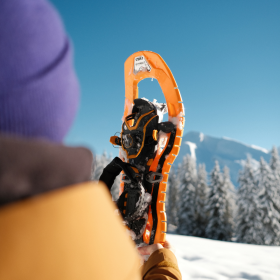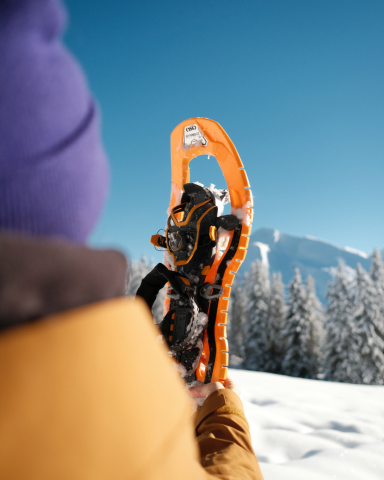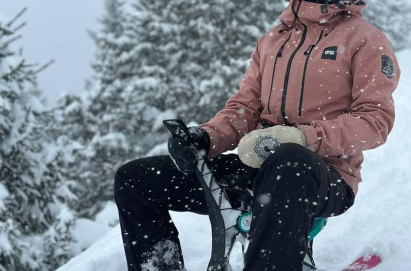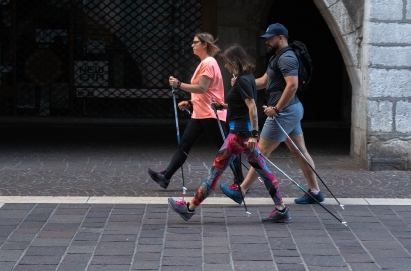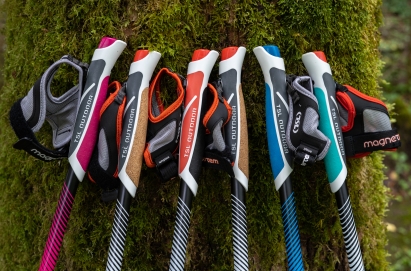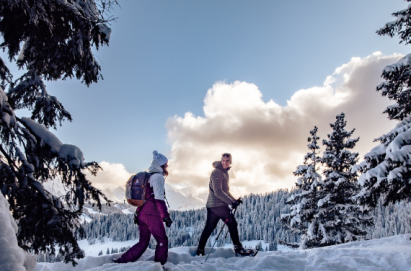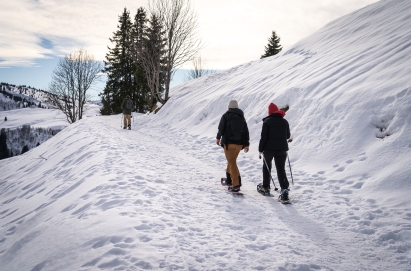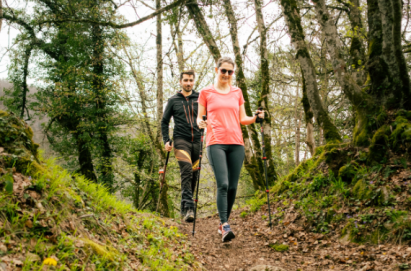
How Do Snowshoes Work?
When snow blankets mountainous landscapes, snowshoes become an essential winter essential for travel enthusiasts and recreation seekers. Understanding how snowshoes work is not merely about appreciating a piece of equipment; it's about embracing the synergy of science and history that allows us to walk, explore, and take in the snowy terrains without sinking into the depths of compact snow. And at TSL Outdoor, we understand this all too well.
This guide will help you learn about the historical evolution of snowshoes, the mechanics behind them, and how they distribute your body weight over a larger surface area, making your winter treks enjoyable and memorable without the extra body strain.
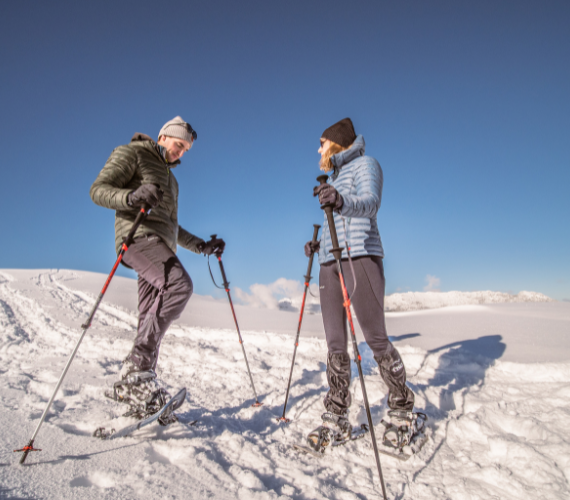
Stepping Along History: The Evolutionary Tale of Snowshoes
The history of snowshoes is as old as the need to traverse snowy terrains. Originally crafted from carved wood and animal hide, snowshoes were vital for survival, enabling our ancestors to hunt and travel in regions overwhelmed by winter's touch. This necessity sparked innovation, leading to a variety of designs tailored to different environments and needs.
The evolution of snowshoe design is a testament to the relationship between environment and innovation. The wide, upturned models of Northern indigenous peoples, created to distribute weight effectively over powdery snow, contrast with the more compact and mobile designs of mountainous regions, where maneuverability is key through packed snow.
Nonetheless, each style reflects a deep understanding of the local climate and terrain, showcasing the adaptability and resourcefulness of those who relied on them.
Today's snowshoes have undergone a significant transformation, leveraging modern materials and engineering. Yet, the fundamental purpose remains unchanged—snowshoes can help winter enthusiasts walk atop snow without sinking.
Flotation Fundamentals 101: How Snowshoes Work to Keep You on Top of Snow
Weight Distribution
The principle behind snowshoes is simple yet ingenious. By distributing your body weight across a wider area, snowshoes reduce the pounds per square inch (PSI) exerted onto the snow's surface.
This distribution of weight prevents the snowshoe from sinking too deeply into the snow, a concept known as flotation. It's the same reason why a large flat rock can sit atop a snowbank without breaking through, while a small, heavy object might plunge straight down.
Maximizing Surface Area
Flotation is all about maximizing the surface area in contact with the snow. Traditional snowshoes were observed to be wide and cumbersome as they were designed to create a large footprint.
Today's snowshoes, however, achieve this with more sophisticated designs that allow for easier movement while still providing the necessary surface area to prevent sinking.
No matter your activity in deep snow, the design of modern snowshoes are intended for you to move forward (and not sink) with confidence and stability, even in the most challenging winter conditions.
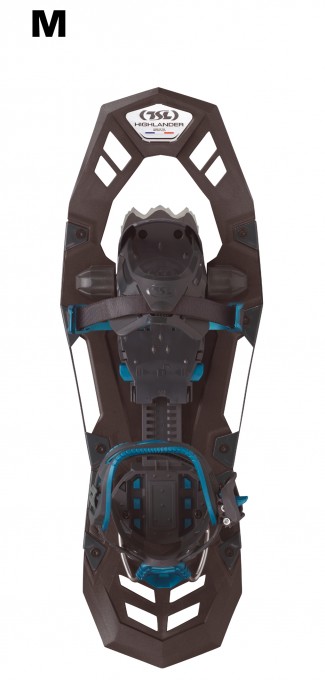
HIGHLANDER ACCESS

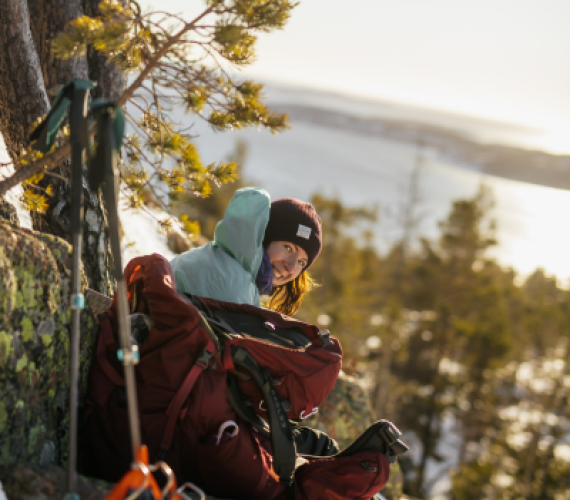
Choosing the Right Material: What Makes a Snowshoe
The materials and design of a snowshoe are critical to its functionality for users. Men looking for robust and durable options can explore snowshoes designed for men, which often feature materials that offer a balance between strength and weight. Beyond the basic requirement of flotation, the choice of material for each component of a snowshoe plays a pivotal role in its performance, comfort, and durability.
Snowshoe Frame: The Foundation of Functionality
The frame is the backbone of a snowshoe, giving it structure and defining its shape. While traditional snowshoes were often made of wood, modern snowshoes frequently utilize lightweight and sturdy aluminum for the frame. This material choice offers a balance between strength and weight, providing a sturdy yet light base that can support the user's body weight without adding undue bulk. The frame may also be made of an expandable polymer or foam, akin to the technology used in athletic footwear, to enhance comfort.
Snowshoe Deck: The Art of Weight Dispersion
The deck of a snowshoe is where the magic of weight distribution happens. It's the surface that contacts the snow, working in tandem with the frame to disperse your weight evenly across a larger surface area. Modern decks are often crafted from durable polymers or synthetic fabrics, which offer resilience against the elements and flexibility for varied snow conditions.
Snowshoe Cleats/Crampons: The Grip of Assurance
For icy terrains, cleats or crampons are indispensable. These metal teeth “bite” into the ice, providing the traction needed to cross slick surfaces confidently. While fresh snow may not require such an aggressive grip, in icy conditions, they are as crucial to ensuring your safety and reducing strain on your muscles.
Snowshoe Binding: The Secure Link
Bindings are what keep your snowshoes and boots as one. The design of the bindings, such as the hook-and-loop system ensures that your foot stays in place, allowing for a natural and secure stride through the snow.
Snowshoe Nose and Tail: The Dynamics of Movement
The nose of the snowshoe, often curved upwards like the tip of a ski, prevents snow from piling up on top of the shoe with each step. This design feature saves energy and reduces the risk of tripping. The tail, typically narrower than the nose, complements your stride, allowing for a natural gait without the awkward drag or noise that traditional snowshoes can produce.
Each element, from the aluminum or polymer frame to the polymer deck, is a testament to the evolution of snowshoe design, reflecting the ingenuity and adaptability of those who seek to conquer snowy terrains. The right materials not only provide the necessary flotation but also enhance the overall snowshoeing experience, marrying tradition with modern technology.
Practical Application: Using Snowshoes in Various Conditions
Mastering the Walk: Techniques for Different Snow Conditions
Using snowshoes effectively requires technique, especially when facing varied snow conditions:
- On level ground: A normal stride will often suffice.
- In deep snow: A wider stance helps to distribute weight more evenly and prevent the tips from crossing and causing a fall.
- Uphill: These treks may require the use of heel lifts (or climbing bars), to increase traction while reducing calf strain.
Snowshoeing in Deep Snow: Tips and Tricks
Deep snow presents unique challenges that require specific snowshoe features, like aggressive traction systems for grip and larger surface areas for better flotation.
When attempting to walk in deep snow, it's important to:
As an additional tip, snowshoeing poles can also be treasured equipment, providing stability and aiding in balance. Whether you're exploring a quiet, snowy forest or trekking across an open, wintry meadow, adopting the right techniques and wearing the right snowshoes for women can make all the difference.
- Lift your knees slightly higher than normal: This action helps prevent the front of the snowshoes from catching on the snow, which can cause tripping. It also ensures that each step fully engages the snowshoe's flotation capability, keeping you on the surface rather than breaking through.
- Use a heel-to-toe motion to make the most of the snowshoe's design:: Rolling your foot from heel to toe with each step allows the crampons (metal teeth under the snowshoe) to grip the snow more effectively, providing better traction. It also helps in transferring your weight more smoothly, which is crucial for maintaining balance and conserving energy in challenging conditions.
Made to Last: Maintaining Your Snowshoes
Regular Care Tips
To ensure your snowshoes remain reliable season after season, regular maintenance is key. After each use, it's important to:
- Remove snow and ice from all surfaces of the snowshoes to prevent material degradation;
- And check the bindings and the frame for any signs of wear or damage.
These small, yet important steps can help you catch issues before they break down while in use, so you can protect your investment and keep your gear for years to come.
Off-Season Storage
When the snow melts and it's time to store your snowshoes, proper care will ensure they are ready for the next winter. Make sure to:
- Dry your snowshoes thoroughly to prevent rust or mildew;
- Store your snowshoes in a cool, dry place away from direct sunlight to avoid material deterioration;
- Hang them off the ground to prevent deformation of the frames and straps.
These simple, yet practical steps will keep your snowshoes in prime condition, so you’ll be ready to walk over the snowy terrain whenever winter returns.
Snowshoeing Unveiled: A Step Beyond the Surface
Understanding how snowshoes work is a fascinating journey through science, history, and innovation. From the distribution of weight that prevents us from sinking into the snow to the evolution of materials that have made snowshoes more durable and comfortable, each aspect contributes to making our winter escapades enjoyable.
Snowshoeing is not just a means of travel; it's a way to connect with nature, history, and the ingenuity of human design.
Whether you're a beginner looking to try to walk on snow for the first time or an experienced enthusiast seeking snowy adventures, TSL Outdoor’s snowshoes are your gateway to exploring the winter world. And for our young adventurers, kids' snowshoes are available to make their first steps in the snow as memorable as yours.
We pride ourselves on our selection of snowshoes for women, men, and children. So take a look for yourself and set off on your winter expedition today with TSL Outdoor.
